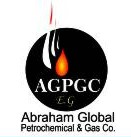Modular Refinery
 Modular units being boxed for shipment to the job site for installation. All process equipment is designed and fabricated for shipment to any location in the world. The modular design allows for greatly reduced installation schedules.
Modular units being boxed for shipment to the job site for installation. All process equipment is designed and fabricated for shipment to any location in the world. The modular design allows for greatly reduced installation schedules.
This picture represents a 30,000 bpd unit installed in Papua New Guinea and a prospective client can expect a similar unit construction on their site. This site depicts an optimal installation with the ability to receive crude and transport export finished product from tankers. Another solution is to construct crude and finished product pipelines to transport product.
Modular equipment being loaded at the Port of Houston on it’s way to Papua New Guinea to be installed on site.
Typical job site photograph of steel going in and setting of process vessels.
| Modular Refineries Typical Modular Refineries offered by AGPGC & PARTNERIntroductory Information
AGPGC & PARTNER specializes in delivering skid mounted modular crude oil refineries that process from 300 to 12,000 barrels per day (15,000 to 600,000 metric tons per year) of crude oil to remote locations in the world. AGPGC & PARTNER began marketing the compact modular refinery design in the late 1990’s. The basic crude oil atmospheric distillation unit (ADU) produces naphtha, kerosene, diesel and #6 fuel oil. Additional processing units can be supplied by AGPGC & PARTNER that are capable of producing specification high-octane motor fuel, commercial jet fuel, low sulfur diesel, fuel oil and asphalt. 
Two or more plants can be installed on a single site allowing the simultaneous processing of more than one type of crude oil and one plant can still be in operation in the event that one plant is down. The plant sizes can be increased in stages. AGPGC’s & PARTNER larger ADU plants (3,000 to 12,000 bpd): • can be set up and be in operation within several weeks after arrival at a fully-prepared and completed site, • allow a single operator to restart the plant from a cold start in less than four hours and have the plant in full operation, • are completely automated and once an operator sets all the controlling points, all product temperatures and flows are controlled automatically. If a product specification drifts off, or if a potentially hazardous condition develops, the plant automatically turns itself off to a safe condition without the help of an operator. A “First Out” annunciator signals the reason for the shutdown by a flashing red light, • require only a flat support area or concrete slab, and • require no water or instrument air. AGPGC & PARTNER designs and builds the following additional equipment for its distillation units: • special alloy construction for processing high sulfur crudes • desalter packages for removing salt from the crude for corrosion prevention • naphtha, jet fuel and diesel hydrotreaters for sulfur removal from the products • catalytic reformers for producing high octane gasoline motor fuels • gasoline stabilizers for reducing the Reid vapor pressure of gasoline • vacuum distillation units for producing paving grade asphalt (bitumen) • sulfur plants for sulfur conversion and air emissions reduction that include an amine plant, a sulfur plant and a tail gas plant • winterized skids for operation in arctic weather • portable laboratory and control buildings with startup supplies 
The AGPGC & PARTNER marketed design comes in standard sizes of 300 bpd (15,000 metric tons per year), 600 bpd (30,000 metric tons per year), 1,000 bpd (50,000 metric tons per year), 3,000 bpd (150,000 |
